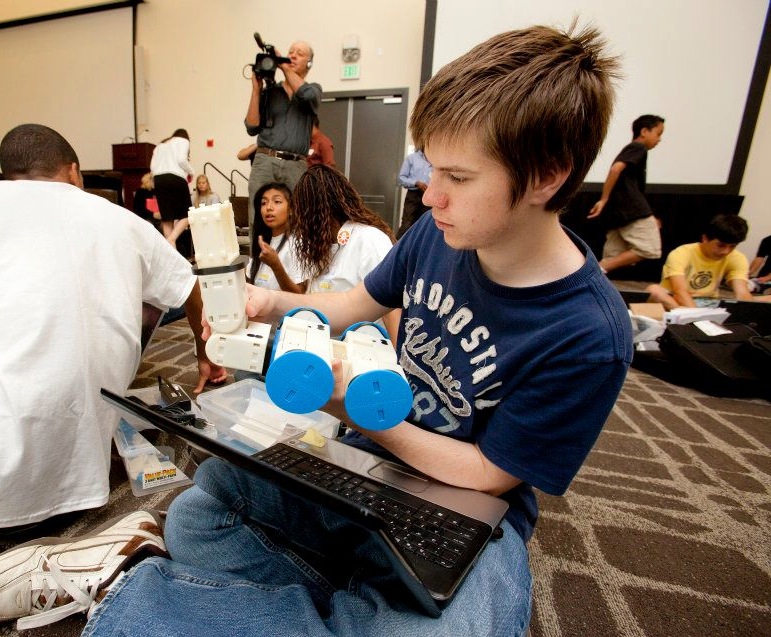Barobo Offers 3D Printed Robot Kit

A high school student assembling a Mobot as part of his STEM education. Courtesy of Barobo
Latest News
April 11, 2013
At this point, I think it’s fair to claim that additive manufacturing (AM) is a transformative technology. AM allows companies freedom of design that would be impossible with other forms of manufacturing, and through companies like Shapeways, can democratize on-demand manufacturing.
Robotics was (and is) another transformative technology, and while the promise of a robot servant in every home hasn’t quite materialized, there can be no question the technology has changed the face of manufacturing. Given the generally modular nature of robots, it was only a matter of time before AM and robotics joined forces, and that time is at hand.
Barobo makes robots designed for education, rather than manufacturing, and has rolled out a new method of making robots more accessible than ever using 3D printing as its medium. The company has hosted plans for its customizable Mobot on its website (available for free download) that can be built and modified using AM.
“We’re breaking from traditional business models and relying on our users to, not just assemble the robot, but play an active role in manufacturing the plastic parts,” said Graham Ryland, president and co-founder of Barobo. “We’ve proven the technology in the classroom and want to get it into students’ hands as quickly and cheaply as possible. Relying on customers to manufacture their own plastic parts wasn’t an option just a few years ago, but 3D printing technology has made this new way of rolling out an educational product possible.”
Robots are one way to get students interested in STEM (science, technology, engineering and math) fields at an early age. By offering the plans for free, Barobo is giving schools the chance to enrich their curriculum for the price of Mobot kit, which runs a reasonable $139.95, plus materials involved in 3D printing.
The Mobot consists of several flexible robot parts that can be fixed together with plastic connection pieces. With the flexibility of AM, students will be able to design original connections for the Mobot, further enhancing its educational value.
While this particular robot is fairly simplistic, the general idea of using AM to design a robot specifically for your needs seems solid to me. A larger 3D printer and more complex circuitry could give companies a way to modify their robotic labor force without having to go to outside sources. This could lead to savings in both time and money, and highlights the potential of AM.
Below you’ll find a video about the Mobot.
Source: PRWeb
Subscribe to our FREE magazine, FREE email newsletters or both!
Latest News
About the Author
John NewmanJohn Newman is a Digital Engineering contributor who focuses on 3D printing. Contact him via [email protected] and read his posts on Rapid Ready Technology.
Follow DE






